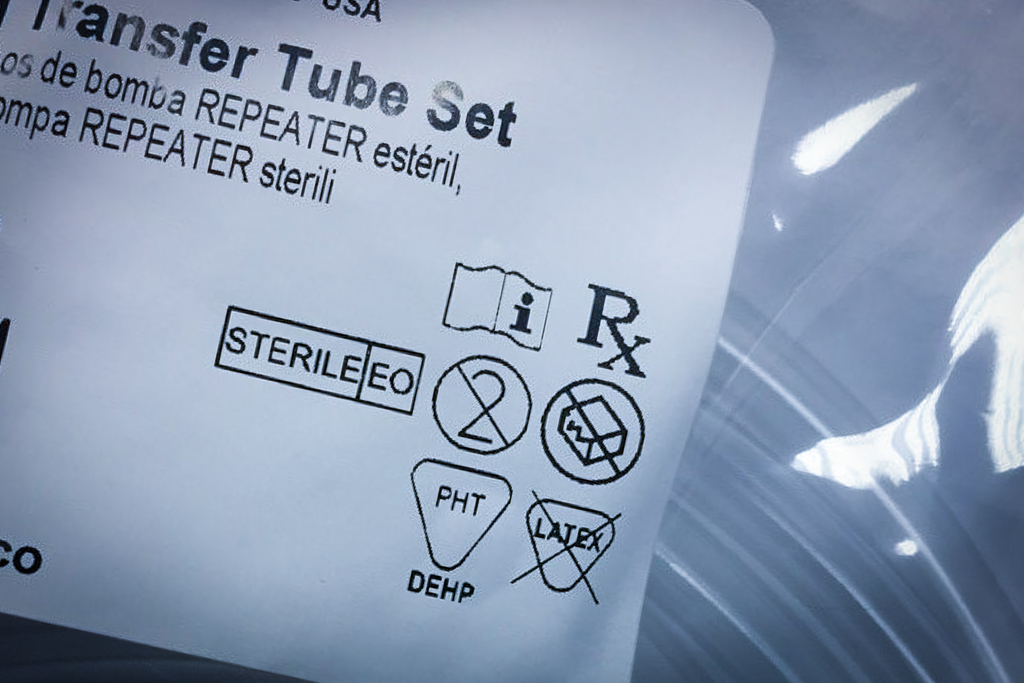In the compounding pharmacy world, we are all under the magnifying glass. Constantly checking drug sterility, potency, technique; but, are we looking closely enough at our compounding supplies and disposables?
While, yes, as a compounding pharmacy sterility certs are collected and the C of A (certificate of analysis) is placed on file- however, are we taking everything into consideration? What about what makes up that particular supplies’ material components?
The “big scary” word in healthcare, was and still is, “latex”. Given the possibility to hypersensitivity reactions to latex, the FDA has provided specific industry guidance on labeling requirements. 1. While this needed latex consideration is still very relevant, it is not the only thing the compounding pharmacist should be concerned with. An often over-looked chemical, still present in some compounding disposables today, is DEHP.
What is DEHP?
Di(2-ethylhexyl) phthlate (DEHP), a known phthalate in the plastics industries, is used to soften plastics allowing them to be more flexible and fulfill functional design requirements in an array of products including many common household items. While useful and safe in specific applications, the substance has been targeted by the FDA as a chemical of concern. The FDA has gone further to release specific guidance for industry limiting their use in CDER-regulated productions. 2 But still, despite the Agency’s wariness, what you may not be aware of is its continued usage in medical tubing and PVC bags.3
If it is in all those items, why should we be concerned?
“Approximately 55% of ingested DEHP is absorbed. DEHP is poorly absorbed through the skin. There are no quantitative absorption data for the inhalation route. The average total daily ambient exposure in the U.S. population as indicated in urine samples is <3.6 µg/kg body weight/day.”4
Because DEHP is not chemically bound to the polymer in PVC, this means there is a higher chance it could leach out into the medication. 5 This means that there is a higher chance of this leaching out occurring with transfer tubing or container devices into fluid drug preparations during the drug compounding process.
Cancer studies have been done on rats and mice with the results showing benign and/or malignant liver tumors. What is important to note here is, most people who will come in contact with DEHP in the healthcare setting are people already in need of medical attention/ assistance. 6
You will be surprised when you look closely, how many products may contain DEHP. Looking for compounding disposables that have no DEHP indication is a good start to protecting patients.
How do I know if my item contains DEHP?
Identification of products containing DEHP is very simple – its’ contained on the label with a DEHP symbol. Labeling claims made by medical device manufacturers are thoroughly scrutinized by the FDA to ensure their accuracy. Products containing DEHP will often bare a symbol (pictured below).

Product label showing the DEHP symbol.
By diligently being on the lookout for this symbol in your compounding supplies, a compounding pharmacy professional can minimize the potential risks to patients this chemical carries. Feel free to contact us if you have any questions regarding this issue.
- Recommendations for Labeling – Not Made with Natural Rubber Latex. (2018, August 24). Retrieved from https://www.fda.gov/regulatory-information/search-fda-guidance-documents/recommendations-labeling-medical-products-inform-users-product-or-product-container-not-made-natural
- Limiting the Use of Certain Phthalates as Excipients in CDER-Regulated. (2018, March 22). Retrieved from https://www.fda.gov/regulatory-information/search-fda-guidance-documents/limiting-use-certain-phthalates-excipients-cder-regulated-products
- “Toxic Substances Portal.” Centers for Disease Control and Prevention, Centers for Disease Control and Prevention, 3 Mar. 2011, www.atsdr.cdc.gov/substances/toxsubstance.asp?toxid=65.
- https://www.atsdr.cdc.gov/toxguides/toxguide-9.pdf
- https://www.uml.edu/docs/Use%20of%20Di-2ethylhexyl-phthalate%20in%20PVC%20exec%20summary_tcm18-229905.pdf
- https://ntp.niehs.nih.gov/ntp/roc/content/profiles/diethylhexylphthalate.pdf

 0
0
